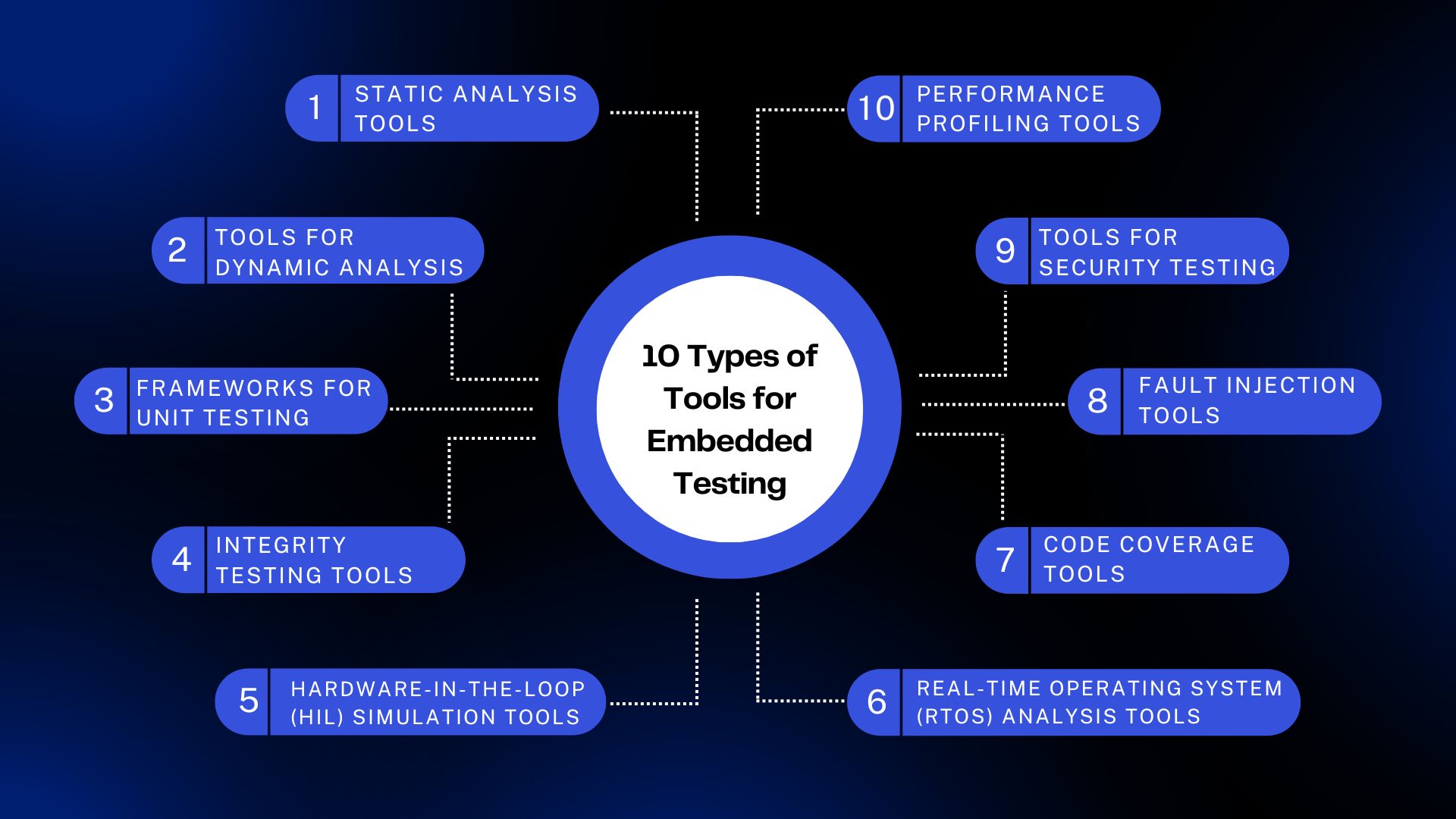Trenika Technologies embedded testing services deliver end-to-end testing services for embedded hardware and software across a host of target devices, a wide range of processors/SOCs, Real-Time Operating Systems (RTOS), development platforms, and programming languages. Our testing services comprise code-level testing, coverage analysis, stress testing, functional testing, code review, debugging, and code maintenance.
Due to increasing connectivity and dependencies, modern embedded applications in many industries including automotive, medical devices, aviation, and even automated cow brushes (no joke) are constantly growing more complex. This complexity comes with implications for embedded testing tools and requires plenty of manual effort, depending on the toolchain. From an operational perspective, many embedded industries are tightly staffed and work in long cycles with strict deadlines. In addition, embedded software systems oft

When talking about embedded programming languages, the first one that comes to most developers' minds is usually C/C++, as it’s one of the largest embedded ecosystems, mainly because C/C++ are low-level languages that can access hardware components directly, e.g., microcontrollers and system memory. This low-level control is both C/C++’s strength and its weakness, as this means there is a large class of issues with memory management and resource overflows. From a security perspective, testing an embedded application is vital since the device running the application is often part of a critical system.
Broadly, there are two main types of embedded testing tools: static analysis and dynamic analysis. Static analysis approaches examine and test source code before it is executed, whereas dynamic analysis approaches examine code while executing it. Both approaches complement each other and are not mutually exclusive.
Static analysis is a method of evaluating source code without executing it. There are two main types of static analysis: linters, which check the quality of the code, and static application security testing (SAST), which focuses on security analysis.
Static analysis is particularly useful for embedded C/C++ code, as the system under test does not need to be compiled or deployed in production. Advantages include:

© Copyright Trenika Technologies Pvt Ltd. All Rights Reserved